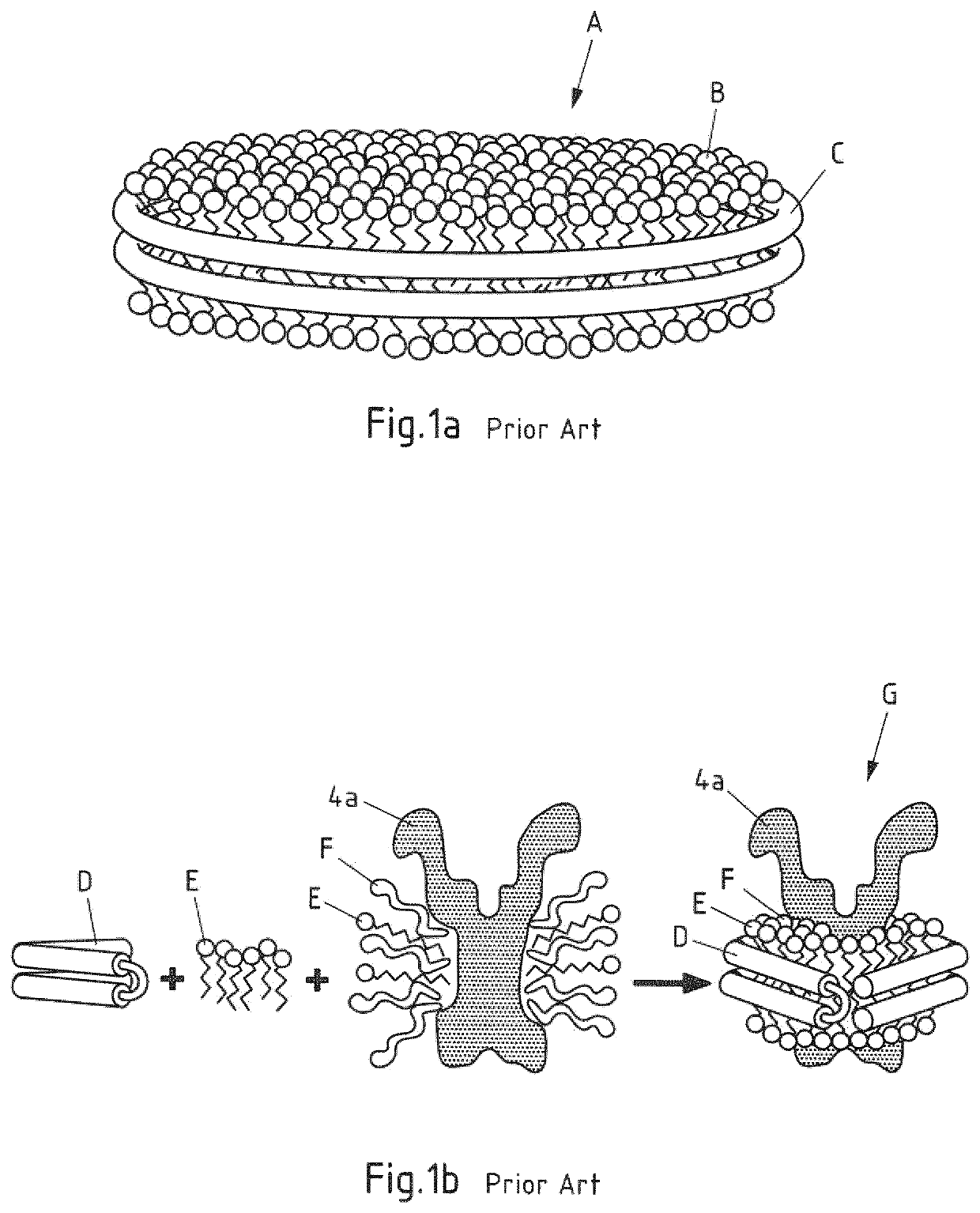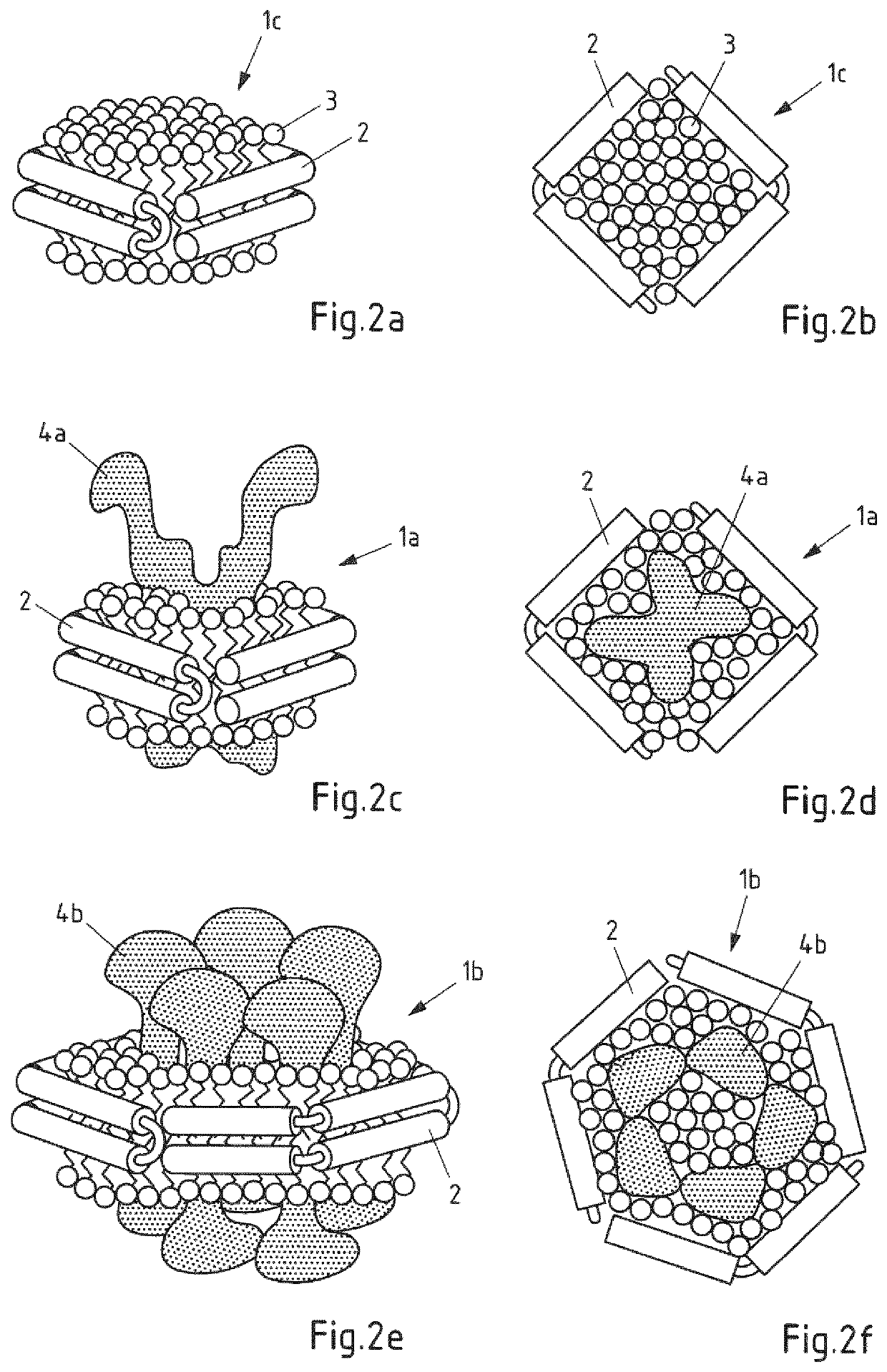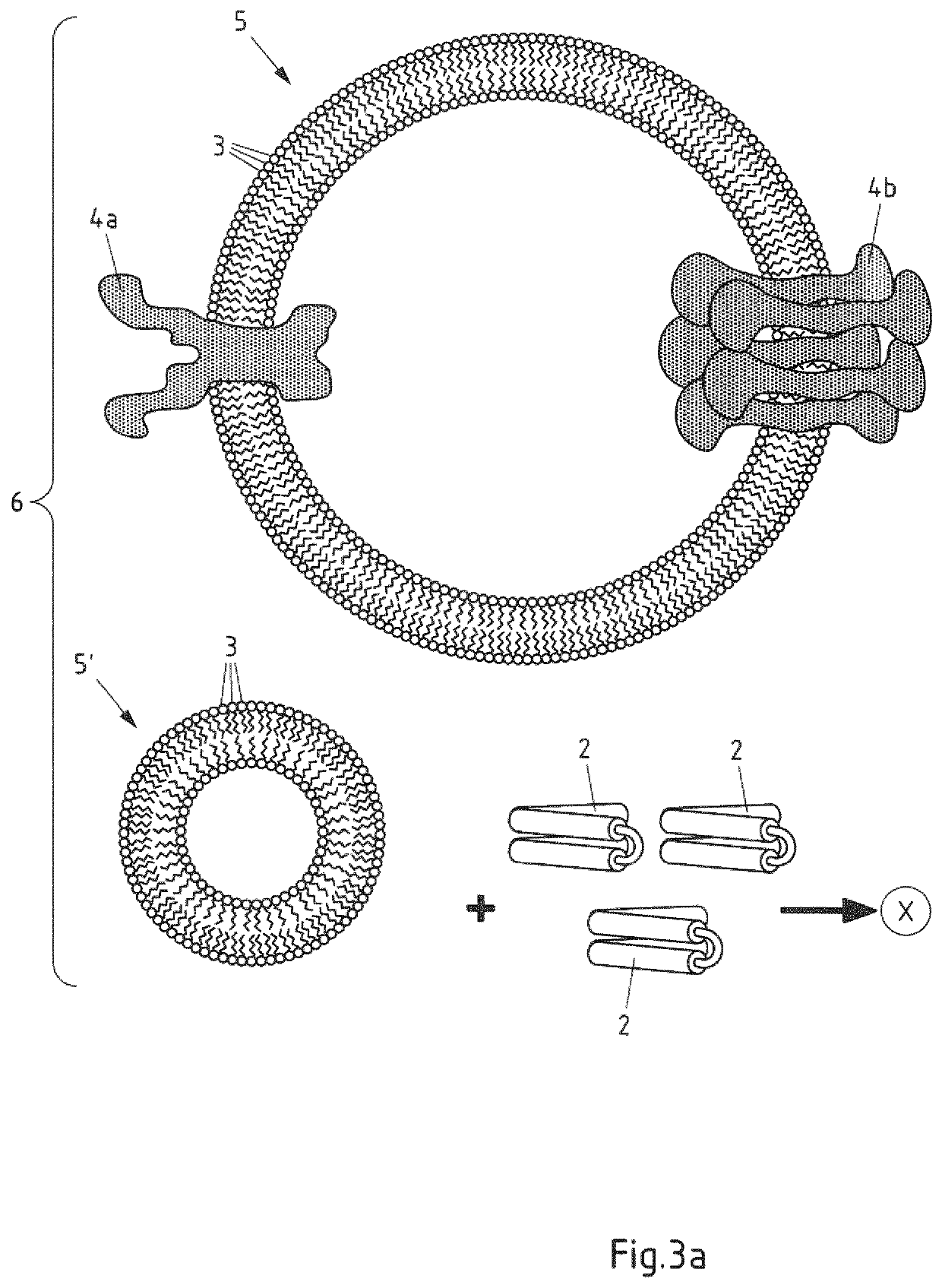Saposin lipoprotein particles and libraries from crude membranes
a technology of lipoproteins and libraries, applied in the field of life sciences, can solve the problems of delayed research on membrane lipidomes and membrane proteomes, incompatible with membrane protein or lipid functional analysis in their natural environment, and inability to soluble detergent-free systems, etc., to achieve flexibility and/or variation, maintain protein structure and/or function, and the effect of flexible siz
- Summary
- Abstract
- Description
- Claims
- Application Information
AI Technical Summary
Benefits of technology
Problems solved by technology
Method used
Image
Examples
example 1a
[0292]Crude yeast cell membrane fractions were obtained from GFP-GLUT5 expressing yeast cells. The membrane fraction, which contained spontaneously formed crude membrane vesicles, was incubated with detergent and Saposin A, followed by removal of detergent-micelles using gel-filtration chromatography / size-exclusion chromatography (SEC) in detergent-free buffer. This lead to the self-assembly of the membrane components present in the initial mixture into a library of nanoscale Salipro particles. In particular, monodisperse Salipro particles comprising membrane lipids and GFP-GLUT5 could be identified within this library.
[0293]1. Membrane Preparation
[0294]Crude yeast membranes were obtained from yeast cells expressing rat GLUT5 from a GAL1 inducible TEV cleavable GFP-His8 2μ vector pDDGFP2 known in the prior art. The vector was transformed into the S. cerevisiae strain FGY217 (MATa, ura3-52, lys2Δ201, and pep4Δ) which then overexpressed GFP-GLUT5 in its cell membrane.
[0295]To generate...
example 1b
[0303]1. Setup
[0304]Crude yeast membranes containing crude membrane vesicles and rat GLUT5 were prepared as described in example 1a.
[0305]2. Variation of the Process for Salipro Particle Library Formation.
[0306]Two different approaches to make Salipro-GFP-GLUT5 particles from crude membrane extract were evaluated.
[0307]For the first approach, 25 μl of saposin A (0.75 mg / ml) were added to 1 μl crude membrane extract containing crude membrane vesicles and GFP-GLUT5 and incubated for 5 min at 37° C. Thereafter 24 μl HN-D buffer was added to the mix and incubated for an additional 5 min at 37° C. The sample was then centrifuged for 10 min at 13 krpm and SEC analysis was performed as in example 1a.
[0308]For the second approach, 1 ul crude membrane extract containing crude membrane vesicles and GFP-GLUT5 were first supplemented by adding 24 ul HN-D buffer, followed by incubation at 37° C. for 5 min. The sample was then centrifuged for 10 min at 13 krpm. The lysate suspension was collected...
example 2
[0311]1. Setup
[0312]Crude yeast membranes containing rat GFP-GLUT5 and crude membrane vesicles were prepared as described in example 1a.
[0313]2. Salipro Formation, Titration
[0314]20 μl of yeast crude membranes were mixed and solubilized with 60 μl HN buffer and 20 μl HN buffer supplemented with 5% DDM at 4° C. for 1 h. The membrane lysate was then cleared from debris and protein aggregation by ultracentrifugation using a TLA-55 rotor at 47 krpm (100,000 g) for 30 min. 5 μl of the cleared membrane lysate, which contained crude membrane vesicles, was then mixed with different volumes (12, 20, 30 and 40 μl) of saposin A (4 mg / ml, HN buffer) and incubated 5 min at 37° C. Thereafter the sample volumes were adjusted to 50 μl with HN buffer and centrifuged 10 min at 13 krpm. SEC analysis was performed (using a Shimadzu HPLC system) and 35 μl sample was injected to a 5 / 150 Superdex 200 increase column (GE healthcare) with a flow rate at 0.3 ml / min and the presence of the fluorescent GFP tag...
PUM
| Property | Measurement | Unit |
|---|---|---|
| diameter | aaaaa | aaaaa |
| diameter | aaaaa | aaaaa |
| diameter | aaaaa | aaaaa |
Abstract
Description
Claims
Application Information
 Login to View More
Login to View More - R&D
- Intellectual Property
- Life Sciences
- Materials
- Tech Scout
- Unparalleled Data Quality
- Higher Quality Content
- 60% Fewer Hallucinations
Browse by: Latest US Patents, China's latest patents, Technical Efficacy Thesaurus, Application Domain, Technology Topic, Popular Technical Reports.
© 2025 PatSnap. All rights reserved.Legal|Privacy policy|Modern Slavery Act Transparency Statement|Sitemap|About US| Contact US: help@patsnap.com



